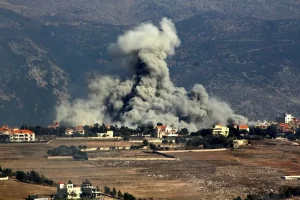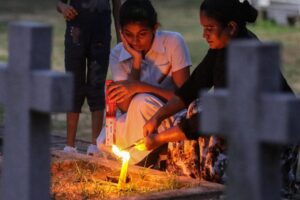On the streets below, people wear face masks and hooded jackets to ride out another dust-covered day that is no less miserable and unhealthy, even if it is expected at this time of the year.
Yellow dust is a seasonal ordeal for millions in North Asia, as sandstorms from the Gobi desert that borders China and Mongolia ride springtime winds to reach the Korean peninsula and this year, farther east to Japan.
It aggravates air pollution and puts people at greater risk of respiratory disease as the particles are small enough to be inhaled into the lungs.
“You don’t feel happy. It’s like a very bad weather day. You naturally want to be outside on a sunny day. But when the weather is very dirty, you feel depressed and want to stay inside,” said the 34-year-old Thompson, who moved from the US to South Korea in 2011 for work.
Eom Hyeojung said there appears to be “no realistic way to avoid yellow dust”, so she sent her daughter to school anyway despite the health risks.
“As it happens so often, like every year, I just let her go. It’s sad, but I think it became just a part of our life,” said the 40-year-old teacher from Seoul.
Han Junghee, a 63-year-old telemarketer, said the sky appeared to be getting murkier by the day so she has been avoiding exercise outdoors.
Source: BBC
















